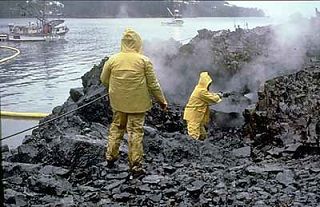From Guest Blogger Hannah Whittenly: How Much Do Industrial Accidents Like the BP Oil Spill in the Gulf of Mexico Cost America Per Year?

What is the dollar cost?
The estimated annual cost of occupational injuries and illnesses is estimated to be $250 billion. Considering that many, if not most, industrial accidents are preventable, it’s disconcerting that the figure is higher by $31 billion than it is for the direct and indirect costs of all cancer and $187 billion more than for strokes.
To calculate the estimated cost of an industrial accident, add the direct cost (see below) plus the indirect cost (calculated at four times the direct cost).
What are the direct costs?
- Worker’s Compensation claims
- Medical Costs
- Indemnity payments
What are the indirect costs?
- Training/compensation of a replacement worker
- Repair of damaged property/equipment
- Accident investigation
- Implementation of corrective action
- Higher insurance premiums
- Lower morale and higher absenteeism
- Legal fees
- Bad publicity
According to Canadian pipeline inspection company 20/20 NDT, employee safety is crucial to the work flow of any business. The repercussions of employee accidents as a result of lack of integrity in construction or poor safety procedures spread a long ways and really hurt financially.
How does the cost of safety improvements impact the bottom line?
Workplace safety is directly related to increased profitability and reduced costs. In a recent survey, senior executives indicated that there was a return of three dollars or more for every dollar invested in injury prevention.
Contrary to what many people think, there is more to business than profit, and there are many valid reasons to invest in a healthy workplace.
- The financial costs of an unhealthy workplace vs. the cost/benefit of a healthy one
- Demonstration of corporate social responsibility and a positive image
- Performance of due diligence with regard to safety
- Taking steps to increase the safety of the workplace, keeping worker’s compensation claims to a minimum, and reducing the odds of higher premiums
- Reduced staff turnover and absenteeism
- Increased productivity
- Reduced risk of fines and litigation
We’ve gotten better, but we still have a work to do.
According to OSHA statistics for 2012, there were 4,175 fatalities in private industry. Of that number, 19.3 percent were in construction. The top four causes of worker deaths for the construction industry were falls (34.6 percent), Struck by object (9.8 percent), Electrocutions (8.1 percent) and Caught-in/between (1.6 percent).
Eliminating these four causes of death, which is, by the way, within the realm of possibility, would save 437 lives a year. Fatal falls alone could be almost eliminated with the consistent use of personal fall protection devices.
